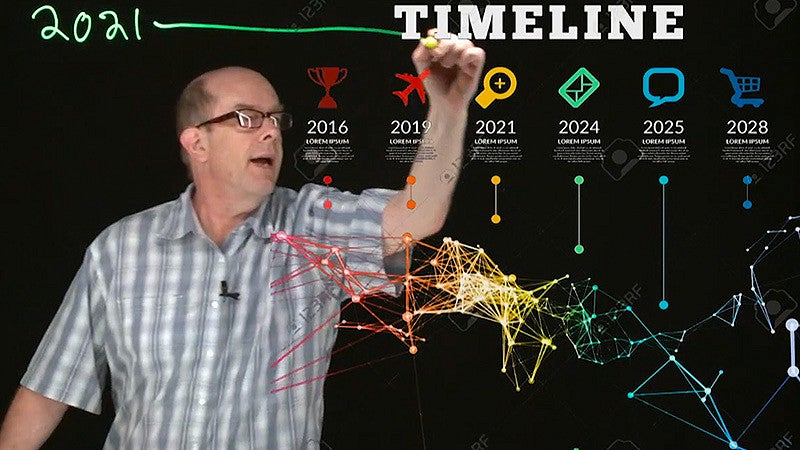Developing a Hybrid Course
Hybrid Teaching at UO
Hybrid classes combine reduced classroom instruction with additional online instruction. All students attend class in person, but the amount of time spent in the classroom is reduced from the standard number of meeting hours per credit and replaced by online learning activities. Some faculty report that this format feels like the "best of both worlds" because students reap the benefits of flexibility in asynchronous learning activities while still enjoying the benefits of classroom community. At UO, hybrid courses at UO are distinct from synchronous online, hyflex, or dual-location because they replace some classroom time with asynchronous online activity for all students.
Please note: Instructional design and stipend support are available for developing hybrid courses that a unit determines as strategic for student success.
Hybrid Faculty Spotlights
Hybrid teaching is all about blending your in-person and online instruction so students move effortlessly from one modality to the next, with one informing the other. Hybrid teaching, therefore, is a fundamentally creative process that gives you the freedom to pick and choose what best serves how you would like to structure your time and the time you spend with your students. For that reason, no two hybrid courses are alike. See our article on Hybrid Teaching at UO for spotlights of three faculty who are leading the creative process in hybrid teaching at the University of Oregon.

Why Develop a Hybrid Course?
1. Student Flexibility
Hybrid teaching and learning helps solve recurring problems around active learning, flexibility, and spontaneity: instructors can build in-person rapport and engagement while also offering students flexibility in their schedules to make the most of class-time.
2. Focused and High Impact
By sequencing asynchronous preparation and reflection with in-person activities, students in hybrid classes are more excited when they show up to class because they recognize the time as focused and high-impact.
3. Faculty Creativity
Instructors can choose what parts of their teaching work best in person and what parts of their teaching work best online. Hence they can tailor their teaching to their own teaching strengths and disciplines.
Qualities of an Excellent Hybrid Course
1. Create a Predictable Rhythm
Students are set up for success with a class meeting schedule that is both predictable and regular so when they sign up they know what to expect. Instructors should be transparent with their students in their Welcome Module about what a typical week will look like so they can schedule accordingly.
2. Communicate the "Throughline"
There is a clear sense of continuity through the week because asynchronous activities are connected to in-person activities. The class feels like one unified experience rather than two parallel classes.
3. Sequence Blended Activities
Students can make the most of their in-person and asynchronous work with blended activities like social annotation of readings. Students show up to class prepared and ready to participate; afterwards, they have momentum leading into their asynchronous work.
4. Do More with Less
The course is not overloaded and does not feel like a fully developed in-person course with additional asynchronous work. Rather, activities are selected with intention based on which works best in person and which works best online.

Team up with an Instructional Designer from UO Online for help creating your hybrid course using research-informed design and pedagogical strategies based on the Universal Design for Learning framework and the Quality Matters standards. To get started, contact uoonline@uoregon.edu.
Helpful Contacts
UO Online Media Services
Work with Jack Kemp, our Online Education Media Producer, to create unique and professional learning videos using state-of-the-art recording equipment, including Learning Glass. Contact Jack at jkemp@uoregon.edu.
UO Libraries Support
Improve textbook affordability and create a Research Guide for your course. Contact Rayne Vieger at raynev@uoregon.edu.


